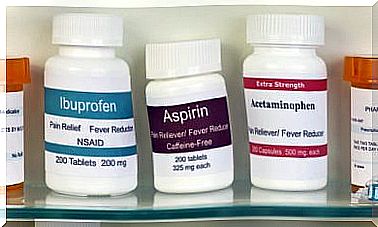What Is Antibiotic Resistance?
Today, antibiotic resistance is one of the greatest threats to health, food security and development. And it is that the improper use that is made of them is accelerating the process.
The number of infections is growing more and more (pneumonia, tuberculosis, gonorrhea, etc.), whose treatment becomes more difficult due to the loss of efficacy of these drugs. As a consequence, hospital stays are prolonged, medical costs and mortality increase.
Now … What is resistance to antibiotics? Why is it produced? Throughout the article, we explain well the concepts and terms related to these issues.
Antibiotic resistance
Antibiotics are drugs that treat infections caused by bacteria. The first antibiotic was used in the 20th century and, since this time, various diseases have been cured. Thus improving the survival and quality of life of millions of people.
However, throughout all this time, the use that has been given to these drugs has not been adequate. An example of this is its administration to try to cure diseases that are not caused by bacteria.

The excessive and inappropriate use of antibiotics accelerates the emergence and spread of resistant bacteria. They are capable of developing different systems to defend themselves from the “attack” of the drug and survive.
In this way, sensitive bacteria are destroyed when exposed to antibiotics; while those that have adopted resistance mechanisms continue to grow and multiply.
Therefore, it is essential to make a responsible use so that, later, you do not have to regret the loss of a good part of its usefulness. And it is also vital that professionals and the general population are aware of the problem to avoid further aggravating the situation in the future.
Types of antibiotic resistance
Antibiotic resistance can be natural (intrinsic) or acquired.
- Intrinsic resistance is specific to each family, species or bacterial group. For example, bacteria that do not have a cell wall are resistant to antibiotics that inhibit their synthesis.
- Acquired resistance is variable and is acquired by a strain of a bacterial species. For example, strains of pneumococcus that have acquired resistance to penicillin, strains of Escherichia coli resistant to ampicillin, or strains of staphylococci resistant to metricicline.
Of the two, it is the latter that leads to therapeutic failure when an antibiotic is used against the microorganism that causes the infection.
Mechanisms of resistance of bacteria
Next, we will explain what different mechanisms bacteria have to become resistant to drugs. Which are collected by various researchers from the scientific journal “Colombia Médica”.

Bacteria acquire greater or lesser resistance depending on their genetic variability. For this reason, the mechanisms they may have are grouped into three categories:
1. Enzyme inactivation
The main inactivation mechanism is hydrolysis (breakdown or dissociation of molecules); Usual for beta-lactamase enzymes and beta-lactams.
However, non-hydrolytic modifications also occur, such as acetylations (reaction that introduces an acetyl group into a chemical compound) or phosphorylations (addition of a phosphate group to any other molecule).
2. Modifications to the white site
There are various strategies to achieve this goal. One of them is typical of Streptococcus pneumoniae (a microorganism capable of causing various infections in humans). Which confers resistance to penicillin and even ceftriaxone.
This bacterium has a gene that codes for the target of the antibiotic itself. But others use that gene to replace it.
3. Modifications of cell wall permeability
Within this mechanism, 3 others are grouped:
- Alterations of the bacterial membranes: it occurs, above all, in gram-negative bacteria. And it is that the researcher Anne H Delcour (University of Houston, United States) explains that the outer membrane of the cell envelope is impermeable to hydrophilic substances.
- Alterations in the entry of antibiotics: it depends on energy, as occurs in the first stage of entry of aminoglycosides.
- Increased release of antibiotics : efflux resistance is a nonspecific mechanism that affects different groups.
How to prevent antibiotic resistance?
To prevent this problem from worsening, the World Health Organization (WHO) warns that a series of measures must be followed. First of all, avoid self-medication. Since the correct diagnosis and the decision regarding the need to administer antibiotics are the exclusive competence of physicians.
In addition, respect the dose and duration of the prescribed treatment; reading its leaflet and following its instructions for use to take it safely. Also, don’t save any leftover antibiotics. Ask the pharmacist to see how to dispose of them.









